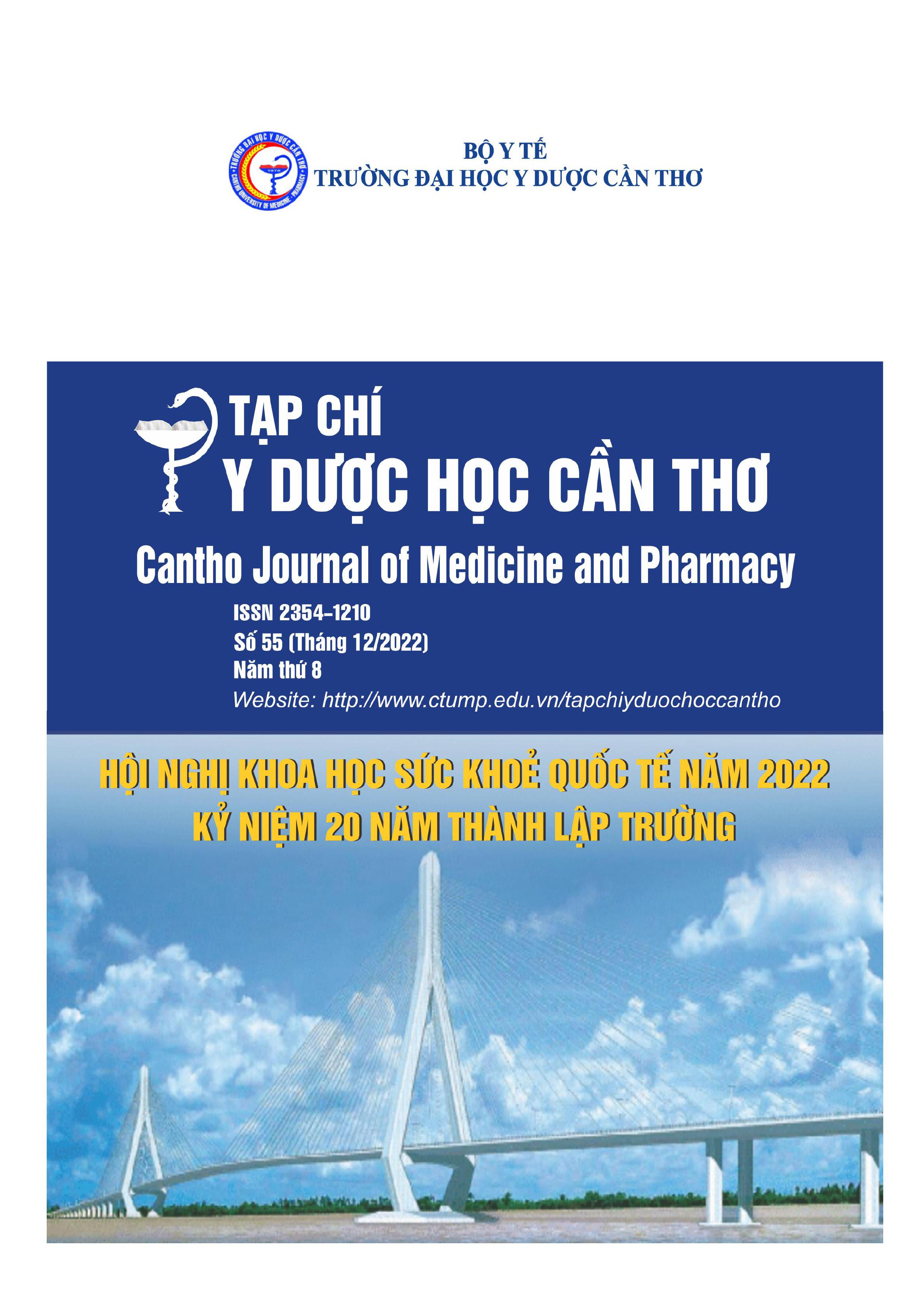SYNERGISM OF SYZYGIUM GLOMERULATUM G., CARALLIA BRACHIATA L., GREWIA ASIATICA L EXTRACTS AGAINST MRSA ATCC 33591
Main Article Content
Abstract
Background: Antibiotic is a special class of drugs of which the use affects not only the patient but also the community. In Viet Nam, antibiotic is an important class of drugs because infectious diseases in Viet Nam is the top ratio of infections and death. MRSA accounted for 82.1% of all isolates of S. aureus as the cause of death related to hospital-acquired pneumonia. Objective: The synergistic formulations of the ethylacetate of Syzygium glomeratum G., Carallia brachiata L., and Grewia asiatica L extracts together on anti-MRSA activity are going to determine. Materials and methods: The diffusion method and the dilution method are used to determine of anti-MRSA activity of plant ethanol extracts and fractions. The SRB assay is used to determination of the safety of plant ethanol extracts on two cell lines of fibroblasts and liver cancer cells. The FIC index was calculated based on the checkerboard method to determine the synergistic ability of the ethyl acetate fractions together on the anti-MRSA activity. Results: Finally, the synergistic formulation of ethyl acetate of Syzygium glomerulatum G. and Carallia brachiata L is 0.008mg/mL and 0.625 mg/mL; the synergistic formulation of ethyl acetate of Syzygium glomerulatum G. and Grewia asiatica L. is 0.063 mg/mL and 0.126 mg/mL. Conclusion: The anti-MRSA activity of Syzygium glomerulatum G., Carallia brachiata L., and Grewia asiatica L extracts are assessed, and these synergistic formulas were reported for the first time.
Article Details
Keywords
MRSA, synergism, antibacterial activity, plant extract, fractions
References
2. Chung DR, Song JH, Kim SH, Thamlikitkul V, Huang SG, et al.(2011), High prevalence of multidrug-resistant nonfermenters in hospital-acquired pneumonia in Asia. American journal of respiratory and critical care medicine, 184(12), pp.1409-1417.
3. Hemaiswarya, S., A.K. Kruthiventi, and M. Doble (2008), Synergism between natural products and antibiotics against infectious diseases. Phytomedicine, 15(8), pp. 639-652.
4. Ingle, K.P., et al. (2017), Phytochemicals: Extraction methods, identification and detection of bioactive compounds from plant extracts. Journal of Pharmacognosy and Phytochemistry. 6(1), pp.32-36.
5. Issam, A.-A., et al. (2015), Pharmacological synergism of bee venom and melittin with antibiotics and plant secondary metabolites against multi-drug resistant microbial pathogens. Phytomedicine, 22(2), pp.245-255.
6. Kuok, C.-F., et al. (2017), Synergistic antibacterial effects of herbal extracts and antibiotics on methicillin-resistant Staphylococcus aureus: A computational and experimental study. Experimental Biology and Medicine, 242(7), pp.731-743.
7. Nguyen Thi My Nuong and Ho Huynh Thuy Duong (2016), Selective cytotoxicity of a Vietnamese traditional formula, Nam Dia long, against MCF-7 cells by synergistic effects. BMC complementary and alternative medicine, 16(1), pp.1-10.
8. White, R.L., et al. (1996), Comparison of three different in vitro methods of detecting synergy: time- kill, checkerboard, and E test. Antimicrobial agents and chemotherapy, 40(8), pp.1914 1918.
9. Wright, G.D. and A.D. Sutherland (2007), New strategies for combating multidrug-resistant bacteria. Trends in molecular medicine, 13(6), pp.260-267.


